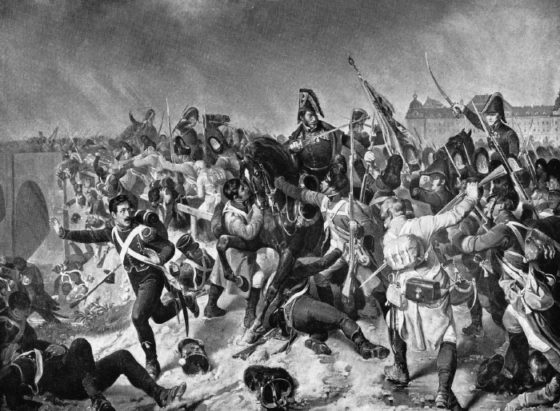
At 2 a.m. on July 30, 1916, German agents operating inside the United States touched off 2 million pounds of American-made munitions stored on the Hudson River in Jersey City, New Jersey. The entire consignment was awaiting transport to Britain and France for use on the Western Front. The blast, which became known as the Black Tom Island Explosion, damaged the Statue of Liberty, shattered windows in Time Square and was felt as far away as Maryland. Although the United States wasn’t officially at war with Germany at the time, hostile agents and saboteurs were still operating on American soil. It was the job of Bureau of Investigation (the forerunner of today’s FBI) to track them down and (if possible) bring them to justice. In this piece, printed with the permission of the FBI, bureau historian Dr. John Fox takes us through how a peacetime police force suddenly found itself embroiled in the First World War long before America officially joined the conflict in Europe.
By Dr. John Fox
WHEN WAR BROKE OUT IN EUROPE IN 1914, the U.S. declared its neutrality. Not surprisingly, investigative agencies like the Bureau of Investigation (the precursor to the FBI) had little role to play.
As the conflict escalated though, American munitions, food, and other goods became the focus of fierce contention. Great Britain and its allies purchased all they could from the U.S. But Germany and the Central Powers, blockaded on the high seas by British ships, resorted to submarine warfare to prevent its enemies from benefiting from American materiel. Berlin also turned to sabotage, espionage, propaganda, and other intelligence tactics to support their war aims.
The U.S. government’s response was divided in the face of these growing threats.
On the one hand, the Treasury Department’s Secret Service sought to pursue German spies and operatives in the U.S. In one well known case, a Secret Service agent tailing a known German agent in New York City picked up a briefcase accidentally left behind on a bus—it contained a trove of documents related to Berlin’s efforts to clandestinely disrupt America’s assistance to the Allies.
Yet, because little of this activity actually violated the limited federal laws of the day, U.S. Attorney General Thomas Gregory cautioned the Bureau of Investigation to keep its investigations into German activities limited—even though they represented potential threats to national security.
That didn’t mean the bureau was on the sidelines, however. Between 1914 and America’s declaration of war in 1917, the bureau’s national security war-related investigations grew rapidly, from a small percentage of the total caseload in 1914 to almost 30 percent just two years later.
Among some of these early investigations:
- In 1914, bureau agents broke up a ring run by Hans Adam Wedel, Carl Ruroede, and others who engaged in frauds to obtain passports for the use of German reservists stuck in the U.S. when war erupted.
- In 1915, the bureau investigated Werner Horn, a German national who bombed a bridge between Maine and Canada. Horn had attacked the Canadian side of the bridge, fled to American soil and declared himself an agent of the German army. The bureau helped develop evidence that Horn had carried dynamite on public interstate transportation, a federal crime. He served 18 months in a U.S. prison and was later extradited to Canada, where he was sentenced 10 years for his sabotage. He was released in 1921.
- Also in 1915, agents in New York investigated a plot to blow up the Welland Canal, a major shipping point in Niagara, Canada between Lakes Erie and Ontario. Paul Koenig, head of security for a German shipping line, and Richard Leyendecker, a New York antiques dealer, were arrested. German military attaché Franz von Papen was also charged for his role in the plot, but he had already left the U.S. Papen, however, was later linked to the previously mentioned Secret Service investigation involving the briefcase full of sensitive German documents left on a New York City bus.
In fact, it was these investigations by the bureau and the Secret Service, along with Berlin’s resumption of unrestricted submarine warfare and the Kaiser’s plan to convince Mexico and Japan to ally with it against the United States, that helped drive America to enter the war on the Allies’ side on April 6, 1917.
That development brought even more work for the bureau, as we will see in an upcoming story.
Dr. John Fox is an historian with the Federal Bureau of Investigation in Washington, D.C. this article was reprinted with permission of the FBI.










Worth noting that the Franz von Papen involved in the plot to blow up the Welland Canal went on to be briefly Chancellor of Germany in 1932 and Hitler’s Deputy Chancellor in 1933.
Thanks for that.
Considering that the US Secret Service relied on MI6 agents in the US (in W1), of which some claim there were 80 individuals, and that MI6 was instrumental in shaping the OSS/CIA in W2, and that Black Tom and etc served not German, but English purposes (the entry of the US to save the day), the focus on FBI operations in re Black Tom etc, serves to obscure some probably very secret relationships. Further, the lobbying by TR and etc to force Wilson into the war ought to be traced according to finances and associations.